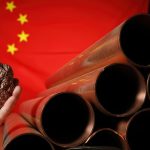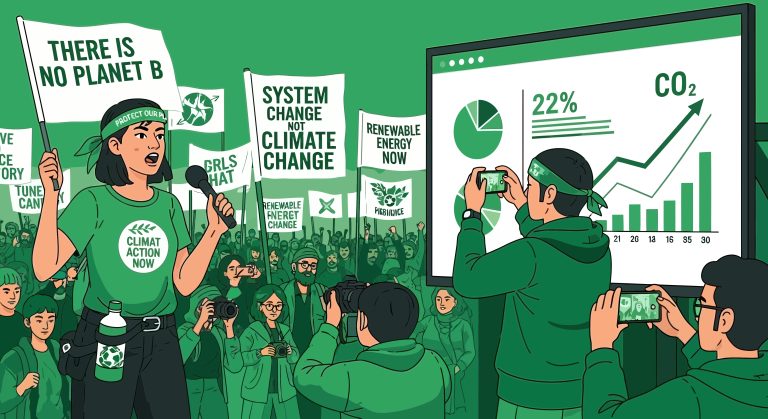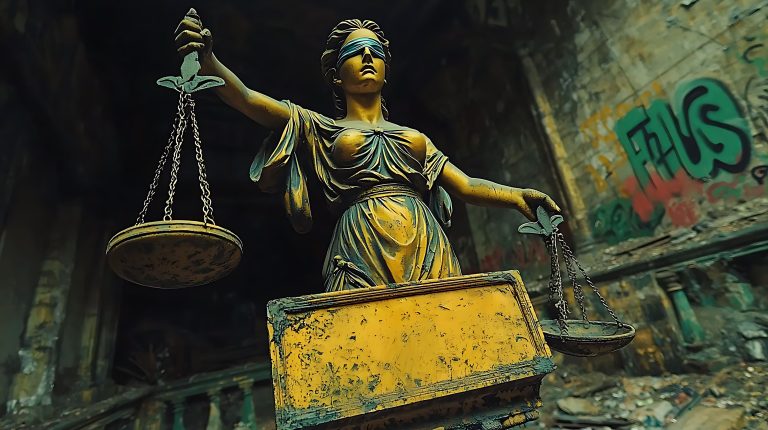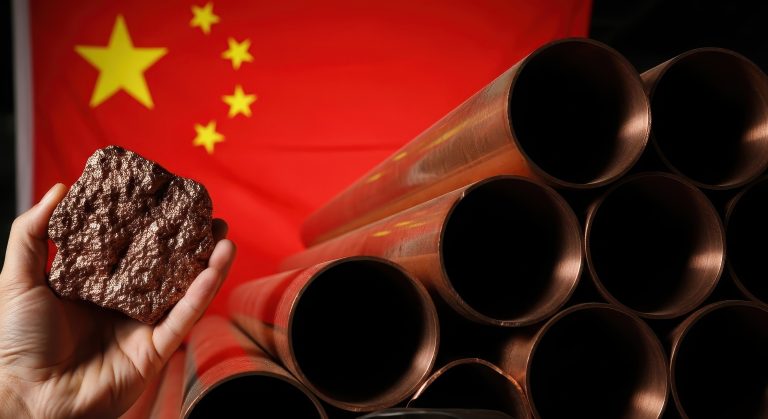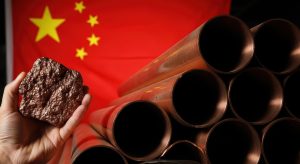
China’s grip on the global rare earth market goes beyond mining. Through export controls, proxy extraction, and regional influence, Beijing is redefining industrial power one mineral at a time.
The New Leverage
Beijing doesn’t need to invade to control.
It only needs to license.
In October 2025, China’s Ministry of Commerce released Notice 61 — a dense bureaucratic document that quietly rewired global trade. It extended China’s rare earth export controls beyond its borders, giving Beijing say over any product — anywhere — that contains even trace amounts of China-origin rare earth elements.
For a world running on electric vehicles, wind turbines, and semiconductor magnets, the impact is enormous. Overnight, China turned market share into jurisdiction.
This is not just about minerals.
It’s about power — chemical, political, and moral.
From Monopoly to Ministry
China’s dominance in rare earths isn’t new. It produces roughly 60–70% of global supply and refines over 85% of it.
What’s new is the regulatory reach.
The 2025 expansion covers 12 of 17 rare earth elements, adds magnet manufacturing equipment to the export control list, and extends licensing to any defense or semiconductor-adjacent use.
The controls officially take effect November 8, 2025.
That single paragraph of law turns Beijing’s industrial advantage into a compliance trap for every global tech firm.
From here forward, exporting any advanced product containing even 0.1% of China-sourced REE content will require Beijing’s permission.
The message is clear: if it spins, shines, or stores energy — it’s under Chinese oversight.
Vietnam’s Rare Earth Dream — and the Convenient Crackdown
Just to the south, Vietnam was building the world’s most promising non-China rare earth chain.
At its center: the Dong Pao deposit, one of the largest untapped heavy rare earth reserves in Asia.
Vietnamese company VTRE (Vietnam Rare Earth JSC), led by Luu Anh Tuan, was the public face of that effort. VTRE worked with foreign partners — including Australia’s Blackstone Minerals — to build out refining capacity and break China’s monopoly.
Then came the purge.
In October 2023, Vietnam’s Ministry of Public Security arrested Tuan and five others, seizing 13,715 tonnes of ore and alleging forged invoices and tax evasion.
Officials described it as part of the country’s “anti-corruption campaign.”
Investors saw it as something else: a project-killing shock that froze the only serious alternative to China’s REE dominance.
By early 2024, the Dong Pao auctions were postponed indefinitely.
Foreign partners withdrew.
China, meanwhile, tightened export rules again — unthreatened and unopposed.
Tuan remains detained. Vietnam’s rare earth sector remains stalled.
Timing, as ever, is strategy.
Hanoi’s New Alignment
In December 2023, Chinese leader Xi Jinping visited Hanoi to declare a “community with a shared future.”
The visit yielded 36 new agreements, ranging from security and infrastructure to digital surveillance cooperation.
Rare earths were never mentioned publicly — but the silence spoke louder than a signature.
At the same time, Vietnam’s political hierarchy shifted.
After years of “Blazing Furnace” anti-graft campaigns under Nguyen Phu Trong, power consolidated under To Lam, a former security minister known for pro-Beijing pragmatism.
The same ministry that arrested Luu Anh Tuan — the Ministry of Public Security — now effectively runs Vietnam’s economy.
Beijing didn’t need to bribe Hanoi.
It only needed to wait for ideology to do the work.
Myanmar: The Shadow Supply Chain
While Vietnam cooled, Myanmar burned — literally.
Satellite imagery shows rapid expansion of rare earth mining across Kachin State and northern Shan, regions controlled not by the central government but by militias — many aligned with Chinese interests.
A 2025 Reuters investigation revealed that the United Wa State Army (UWSA), a Chinese-armed militia, now controls much of Myanmar’s heavy rare earth output.
Ore is shipped north to Yunnan Province, where Chinese refiners process it into magnets for EVs, wind turbines, and weapons.
It’s a symbiosis built on coercion.
When rebels from the Kachin Independence Army (KIA) seized mines in early 2025, China’s imports from Myanmar dropped 89% within weeks. Beijing retaliated economically — halting reagent shipments and border trade until control was restored.
By outsourcing extraction to militias, Beijing kept supply steady and blame distant.
Environmental ruin, corruption, and forced labor stayed south of the border.
Refined profits stayed north.
Myanmar is now responsible for over half of China’s heavy rare earth imports.
It’s not a partner — it’s a sacrificial limb of Beijing’s industrial ecosystem.
Environmental Laundering: The Cost of Clean Tech
In China’s official narrative, the country has “cleaned up” rare earth mining.
That’s only half true.
What it actually did was export the pollution.
Acid-leaching mines in Kachin and Shan have devastated farmland, poisoned rivers, and displaced entire communities.
Global Witness calls it “environmental outsourcing at gunpoint.”
Each ton of refined rare earths creates up to 2,000 tons of toxic waste.
Myanmar absorbs the poison; China keeps the profit margin — and the moral high ground.
This is what sustainability looks like when you read the footnotes.
Regulatory Warfare as Strategy
China’s rare earth policy isn’t about economics anymore.
It’s geopolitical architecture disguised as trade regulation.
- The export controls act as soft sanctions, discouraging supply diversification.
- The Vietnam arrests removed a rival chain under the banner of “anti-corruption.”
- The Myanmar proxy extraction keeps production flowing without environmental scrutiny.
Together, these form a three-tier strategy:
Containment, Compliance, and Capture.
Every attempt to break free from China’s supply dominance now faces a different choke point — legal, logistical, or literal.
The West Responds — Slowly
The G7 and EU are finally aligning policy.
New funding is flowing to domestic processing, magnet production, and recycling.
The U.S. Department of Defense recently invested over $400 million in MP Materials to expand heavy rare earth refining in Nevada.
But building refining capacity is a decade-long process.
And every year of delay strengthens Beijing’s grip.
Western leaders call it “strategic competition.”
China calls it “Tuesday.”
he Future: Compliance or Collapse
China’s new model is simple: control the rules, not just the resources.
Every factory, startup, or ally that relies on rare earths now has to decide whether it’s China-compliant or China-defiant.
For those who comply, the supply flows.
For those who don’t, the tap closes.
Vietnam’s dream of independence lies buried in Dong Pao’s dirt.
Myanmar’s forests are dissolving in acid.
And Beijing — without firing a shot — controls the future of green technology.
X. The Realignment
What looks like trade policy is really industrial statecraft at planetary scale.
China turned minerals into a strategic mirror — reflecting each nation’s dependency back at itself.
The West talks diversification.
China acts consolidation.
And in the quiet corridors of rare earth policy, the next global order is already being written — one license at a time.
Sources & Transparency
- China Export Controls: MOFCOM Notice 61 (2025); Georgetown CSET analysis; CSIS brief (Apr–Oct 2025); Reuters / Al Jazeera coverage.
- Vietnam / VTRE Case: Reuters (Oct 2023); Mining Magazine; The Straits Times; CSIS “Blazing Furnace” analysis (2024); Cambridge Univ. Press political protection study.
- Myanmar Mining: Reuters (Jun 12, 2025; Mar 28, 2025); RFA; Le Monde; Global Witness; Stimson Center; The Diplomat (May 2025).
- Western Response: Reuters / Bloomberg (G7 October 2025); U.S. DoD press release (MP Materials, July 2025).
- Supplementary: MIT / Economist – supply-chain concentration studies; Al Jazeera – export policy explainers (2025).



